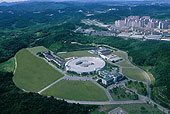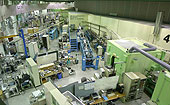The PLS at Pohang Accelerator Laboratory (PAL) is a third-generation light source, the only one synchrotron radiation facility in Korea, and the fifth machine of its kind in the world. In 1995, the PLS opened two beam lines to public users. The PLS was initially operated at 2.0 GeV in 1995. Since 2002, the energy of the electron beam has been upgraded to 2.5 GeV. Two or three beam lines have been added each year for the past 15 years, and as of February 2009, we have in total 27 beamlines in operation and 3 beamlines under construction. In recent years, with demands from the scientific communities in Korea to increase the number of insertion devices and to improve the beam quality – i.e., greater beam stability, smaller beam size, greater brightness and greater energy, the PLS upgrade project (PLS-II) has been officially launched with a project span of three years, from 2009 to 2011. The major objectives of PLS-II are to increase the number of straight sections for more insertion devices, to increase the energy from 2.5 GeV to 3.0 GeV, to increase the stored beam current from 200 mA to 400 mA, to achieve a small emittance 5.6 nm rad, and to create more stable beam conditions. The PLS-II is scheduled to open for user experiments in 2012. Also, PAL is planning for a fourth-generation light source that is based on a self-amplified spontaneous-emission X-ray free-electron laser (SASE XFEL). The proposed output wavelength is 0.1 nm. The proposed fourth-generation light source can produce peak brilliance 1010 times that of the current PLS; it can also provide ultrashort pulses, as short as 100 fs. PAL XFEL project is proposed to the Korean government with a project period four years for construction and one year for commissioning. A new PAL XFEL facility is expected to be completed over the five years following ground breaking in 2011.These PLS, PLS-II, and XEFL are true scientific infrastructures of Korea that are internationally highly visible and highly attractive for scientists not only in materials science, but also in diverse other scientific fields.
|


